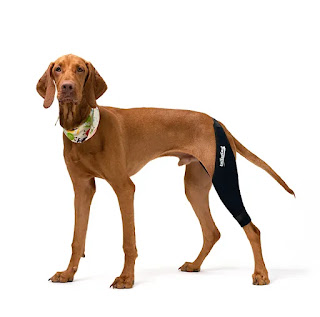Canine leg braces, often referred to as knee or hock braces,
are marvels of engineering designed to provide crucial support and stability to
dogs facing hind leg issues. To truly understand their significance, we must
delve into the intricate anatomy of these dog braces,
which plays a pivotal role in enhancing a dog's comfort, mobility, and overall
quality of life.
Structural Components
At the heart
of every canine leg brace lies a carefully crafted structure comprising several key
components. These braces are not one-size-fits-all; they are highly
customizable to cater to each dog's unique needs.
v Frame:
At the core of every canine leg brace lies its foundational structure, embodied
by the brace's frame. Typically constructed from lightweight, durable materials
such as aluminum or plastic, it provides stability and support while allowing
for flexibility and movement.
v Straps:
Adjustable straps are integral in ensuring a secure and comfortable fit. They
are strategically positioned to distribute pressure evenly and prevent
slipping, essential for the brace's effectiveness.
v Pads and Liners:
Soft, cushioned pads and liners line the interior of the brace, promoting
comfort and preventing chafing or irritation. They also aid in reducing
pressure on sensitive areas.
v Hinges and Joints:
For dog knee braces, hinges and joints mimic the natural movement of a dog's knee
joint, offering controlled flexibility while limiting harmful motion. In hock
braces, these components stabilize the joint, preventing excessive bending.
Functional Principles
The
functionality of canine leg braces is rooted in biomechanical and physiological principles. These
braces provide targeted support to specific areas, harnessing the body's innate
ability to heal and adapt.
v Stabilization:
The primary function of these dog braces
is to stabilize injured or weakened joints, reducing excessive movement and
strain. This stabilization minimizes pain and prevents further damage, creating
an environment conducive to healing.
v Compression:
The brace's snug fit and compression elements improve blood circulation to the
affected area. This enhanced circulation facilitates the delivery of oxygen and
nutrients while expediting the removal of waste products and reducing
inflammation.
v Range of Motion Control:
In cases where controlled movement is beneficial, such as post-surgery
recovery, hinges and joints within the brace enable precise control of the
joint's range of motion. This controlled movement promotes healing without
jeopardizing joint integrity.
v Customization:
The ability to customize canine leg braces is a key component of their effectiveness. Accurate measurements
and adjustments tailored to each dog's anatomy ensure an optimal fit, maximizing
comfort and support.
Application and Impact
Canine leg braces are versatile tools used to address a range of conditions, from
ligament tears and arthritis to joint instability. When fitted and used
correctly, they can have a transformative impact on a dog's life.
v Pain Alleviation:
By stabilizing the affected joint and reducing movement-related pain, braces
offer immediate relief to dogs experiencing discomfort.
v Mobility Restoration:
For dogs with limited mobility, braces can be a ticket to renewed freedom. They
enable dogs to engage in activities they may have been unable to enjoy
previously.
v Emotional Well-being:
The enhanced comfort and mobility that braces provide can significantly boost a
dog's confidence and overall emotional well-being. Reduced pain and increased
activity levels contribute to a happier, more contented canine companion.
In
conclusion, the anatomy of canine leg braces reveals a thoughtfully engineered solution that combines
structural elements, biomechanical principles, and customization to address a
wide spectrum of hind leg issues in dogs. When applied with care and precision,
these braces have the potential to transform the lives of dogs and their
dedicated caregivers, exemplifying the power of innovation and compassion in
pet care.












